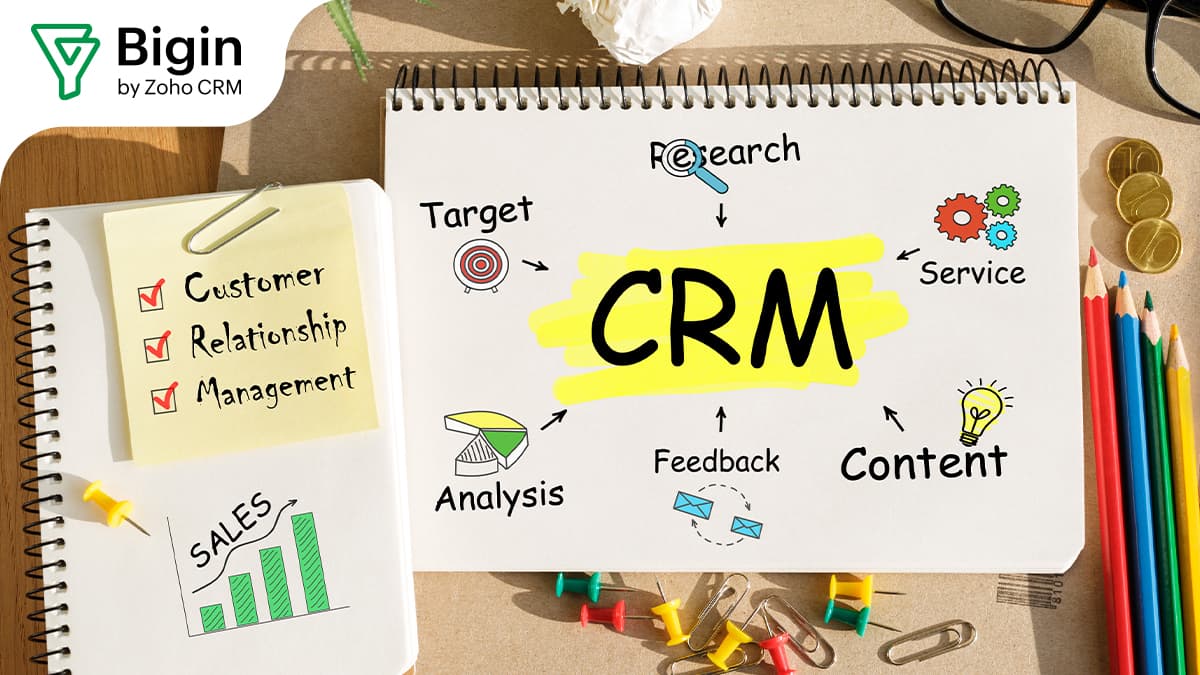
CRM Marketing Best Practices 2025: A Comprehensive Guide to Unlocking Customer Loyalty and Revenue Growth
The world of marketing is in constant flux, and staying ahead of the curve requires a proactive and adaptable approach. In 2025, Customer Relationship Management (CRM) marketing is more critical than ever. It’s not just about collecting customer data; it’s about leveraging that data to build meaningful relationships, personalize experiences, and drive sustainable business growth. This comprehensive guide delves into the CRM marketing best practices for 2025, providing actionable strategies to help you not only survive but thrive in a competitive landscape.
Understanding the Evolution of CRM Marketing
Before we dive into the specifics, it’s crucial to understand how CRM marketing has evolved. Traditional CRM systems were primarily focused on sales automation and contact management. However, modern CRM platforms are now integrated with various marketing tools, providing a 360-degree view of the customer journey. This shift enables marketers to:
- Personalize marketing campaigns based on customer behavior and preferences.
- Automate repetitive tasks, freeing up time for strategic initiatives.
- Track and measure the effectiveness of marketing efforts in real-time.
- Improve customer segmentation and targeting.
- Enhance customer service and support.
In 2025, the focus is on creating truly personalized experiences that resonate with individual customers. This requires a deep understanding of customer data, sophisticated segmentation, and the use of artificial intelligence (AI) and machine learning (ML) to predict customer behavior and optimize marketing campaigns.
Best Practice 1: Data-Driven Personalization at Scale
Personalization is no longer a buzzword; it’s a necessity. Customers expect relevant and tailored experiences. In 2025, successful CRM marketing hinges on the ability to deliver personalized content, offers, and interactions across all touchpoints. This involves:
- Collecting Comprehensive Customer Data: Go beyond basic demographics. Gather data on customer behavior, purchase history, browsing habits, social media activity, and feedback.
- Implementing Advanced Segmentation: Don’t rely on broad segments. Create granular segments based on customer needs, preferences, and behaviors. Utilize AI and ML to identify micro-segments and predict customer churn.
- Dynamic Content and Offers: Use dynamic content and offers that adapt to individual customer profiles. This includes personalized product recommendations, targeted email campaigns, and customized website experiences.
- Real-Time Personalization: Leverage real-time data to personalize interactions in the moment. For example, if a customer abandons a shopping cart, trigger an automated email with a personalized offer.
Example: Imagine an e-commerce company using its CRM to identify customers who frequently purchase running shoes. The CRM could automatically segment these customers and send them personalized email campaigns featuring new running shoe arrivals, exclusive discounts on running gear, and invitations to local running events. This level of personalization fosters customer loyalty and drives repeat purchases.
Best Practice 2: Leveraging the Power of AI and Machine Learning
AI and ML are transforming CRM marketing. These technologies can automate tasks, analyze vast amounts of data, and provide valuable insights that humans might miss. In 2025, businesses that effectively leverage AI and ML will gain a significant competitive advantage. Key applications include:
- Predictive Analytics: AI can predict customer behavior, such as churn, purchase likelihood, and lifetime value. This enables marketers to proactively engage with customers and tailor their marketing efforts.
- Automated Campaign Optimization: ML algorithms can analyze campaign performance data and automatically optimize campaigns in real-time. This includes A/B testing, adjusting bidding strategies, and personalizing content.
- Chatbots and Virtual Assistants: Deploy AI-powered chatbots and virtual assistants to provide instant customer support, answer questions, and guide customers through the sales process.
- Lead Scoring: AI can score leads based on their likelihood of converting, allowing sales teams to prioritize their efforts and focus on the most promising prospects.
Example: A SaaS company can use AI to predict which trial users are most likely to convert into paying customers. The AI can analyze user behavior, such as feature usage, website visits, and support interactions. Based on these insights, the company can then automatically trigger personalized onboarding emails and offer tailored support to help convert these high-potential leads.
Best Practice 3: Omnichannel Integration for Seamless Customer Experiences
Customers interact with businesses across multiple channels, including email, social media, website, mobile apps, and in-person interactions. An omnichannel approach ensures a consistent and seamless customer experience across all these channels. This involves:
- Integrating CRM with All Channels: Connect your CRM with all your marketing and sales channels. This allows you to track customer interactions across all touchpoints and gain a holistic view of the customer journey.
- Personalized Communication Across Channels: Deliver personalized messages and offers across all channels, ensuring consistency and relevance.
- Consistent Branding and Messaging: Maintain a consistent brand voice and messaging across all channels to reinforce your brand identity and build trust.
- Seamless Hand-offs: Ensure seamless hand-offs between channels. For example, if a customer starts a conversation on a chatbot and then needs to speak to a human agent, the agent should have access to the conversation history and customer data.
Example: A retail store can use an omnichannel approach to provide a seamless customer experience. A customer browses products on the website, adds items to their cart, and then leaves the site. The CRM can automatically trigger an email with a personalized offer for the items in their cart. If the customer clicks on the email and visits the store, the sales associate can access their browsing history and preferences to provide personalized recommendations and offer a smooth checkout experience.
Best Practice 4: Prioritizing Customer Data Privacy and Security
In 2025, customer data privacy and security are paramount. With increasing regulations and growing consumer awareness, businesses must prioritize protecting customer data and building trust. This involves:
- Compliance with Data Privacy Regulations: Ensure compliance with all relevant data privacy regulations, such as GDPR, CCPA, and other regional and industry-specific regulations.
- Data Encryption and Security Measures: Implement robust data encryption and security measures to protect customer data from unauthorized access and cyber threats.
- Transparency and Consent: Be transparent with customers about how you collect, use, and store their data. Obtain explicit consent for data collection and processing.
- Data Minimization: Only collect and store the data that is absolutely necessary. Avoid collecting unnecessary data that could increase your risk of data breaches.
- Regular Data Audits: Conduct regular data audits to ensure compliance and identify any potential vulnerabilities.
Example: A healthcare provider must comply with HIPAA regulations to protect patient data. This includes implementing strict data security measures, obtaining patient consent for data collection, and providing patients with access to their data. Failure to comply with these regulations can result in severe penalties and damage to the provider’s reputation.
Best Practice 5: Building Strong Customer Relationships with Proactive Engagement
CRM marketing is not just about transactions; it’s about building long-term relationships with customers. Proactive engagement fosters loyalty, advocacy, and repeat business. This involves:
- Proactive Communication: Don’t wait for customers to reach out to you. Proactively communicate with them through personalized emails, SMS messages, and other channels.
- Customer Feedback and Surveys: Actively solicit customer feedback and use it to improve your products, services, and customer experience.
- Loyalty Programs: Implement loyalty programs to reward loyal customers and encourage repeat business.
- Personalized Support: Provide personalized support and assistance based on customer needs and preferences.
- Community Building: Foster a sense of community among your customers through social media groups, online forums, and other channels.
Example: An airline can use its CRM to proactively communicate with its frequent flyers. The airline can send personalized emails with flight updates, travel tips, and exclusive offers. They can also offer personalized support to address any issues or concerns that customers may have. This proactive engagement builds loyalty and encourages customers to choose the airline again and again.
Best Practice 6: Measuring and Analyzing CRM Marketing Performance
Data is the lifeblood of CRM marketing. To optimize your efforts, you must measure and analyze your performance. This involves:
- Defining Key Performance Indicators (KPIs): Establish clear KPIs to track the success of your CRM marketing initiatives. These KPIs should align with your business goals.
- Tracking Campaign Performance: Track the performance of your marketing campaigns, including open rates, click-through rates, conversion rates, and ROI.
- Analyzing Customer Behavior: Analyze customer behavior to identify trends, patterns, and insights that can inform your marketing strategies.
- Using Data Visualization Tools: Use data visualization tools to present your data in a clear and concise manner.
- Regular Reporting and Analysis: Generate regular reports and conduct in-depth analysis to identify areas for improvement.
Example: A retail company can track its CRM marketing performance by monitoring its email open rates, click-through rates, conversion rates, and revenue generated from email campaigns. They can also analyze customer behavior to identify which products are most popular, which customers are most likely to make repeat purchases, and which marketing messages are most effective.
Best Practice 7: Training and Empowering Your Marketing Team
Your marketing team is the engine that drives your CRM marketing efforts. Investing in their training and empowering them with the right tools and resources is crucial for success. This involves:
- Providing Ongoing Training: Provide ongoing training on CRM software, marketing best practices, and data analysis.
- Empowering Your Team: Empower your team to make decisions and take ownership of their work.
- Providing Access to the Right Tools: Provide your team with access to the right tools and resources, including CRM software, marketing automation platforms, and data analytics tools.
- Fostering a Culture of Collaboration: Foster a culture of collaboration and communication within your team.
- Recognizing and Rewarding Success: Recognize and reward your team’s successes to motivate them and encourage them to perform at their best.
Example: A marketing agency can provide its team with training on the latest CRM software, marketing automation platforms, and data analytics tools. They can also empower their team to make decisions and take ownership of their work. This will help the team to stay up-to-date on the latest trends and technologies and to deliver the best results for their clients.
Best Practice 8: Choosing the Right CRM Platform
Selecting the right CRM platform is a crucial decision. The platform you choose should align with your business needs and marketing goals. Consider the following factors:
- Scalability: Choose a platform that can scale to meet your growing needs.
- Integration Capabilities: Ensure that the platform integrates with your existing marketing and sales tools.
- User-Friendliness: Choose a platform that is easy to use and navigate.
- Reporting and Analytics: Ensure that the platform provides robust reporting and analytics capabilities.
- Pricing: Choose a platform that fits your budget.
- Security: Prioritize a platform with strong security features to protect customer data.
Example: A small business might choose a CRM platform like HubSpot or Zoho CRM, which are known for their user-friendliness and affordability. A larger enterprise might choose a more robust platform like Salesforce or Microsoft Dynamics 365, which offer more advanced features and scalability.
The Future of CRM Marketing: Predictions for 2025 and Beyond
The future of CRM marketing is bright. Here are some key predictions for 2025 and beyond:
- Hyper-Personalization: Expect even greater levels of personalization, with AI and ML powering hyper-targeted campaigns.
- Voice-Activated CRM: Voice-activated CRM systems will become more prevalent, allowing marketers to access data and manage campaigns using voice commands.
- Increased Focus on Privacy: Data privacy will continue to be a top priority, with businesses investing in data security and transparency.
- The Rise of Customer Data Platforms (CDPs): CDPs will become more popular, enabling marketers to unify customer data from multiple sources and create a single view of the customer.
- The Metaverse and CRM: Businesses will explore opportunities to use CRM within the metaverse to create immersive customer experiences.
Key Takeaway: To stay ahead of the curve in 2025 and beyond, businesses must embrace these trends and invest in the right technologies and strategies. A customer-centric approach, combined with data-driven insights and personalized experiences, will be the key to success.
Conclusion: Embracing the Future of CRM Marketing
CRM marketing is evolving rapidly. By adopting the best practices outlined in this guide, businesses can build stronger customer relationships, drive revenue growth, and gain a competitive edge in the ever-changing marketing landscape. In 2025, the focus is on creating truly personalized experiences that resonate with individual customers, leveraging the power of AI and machine learning, and prioritizing data privacy and security. Embrace these strategies, and you’ll be well-positioned for success in the years to come.

